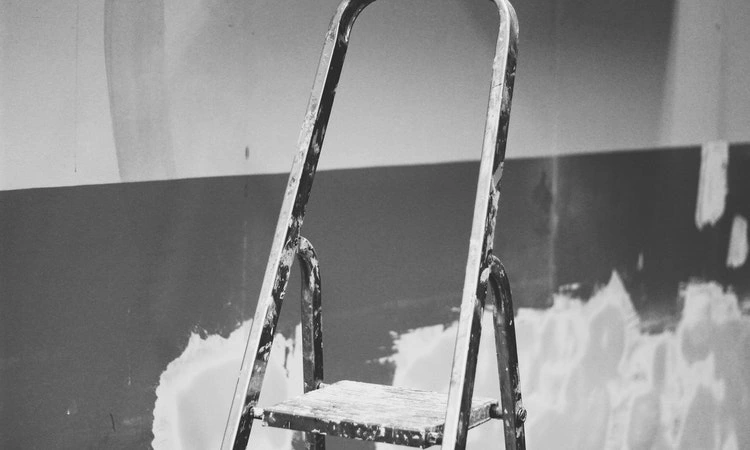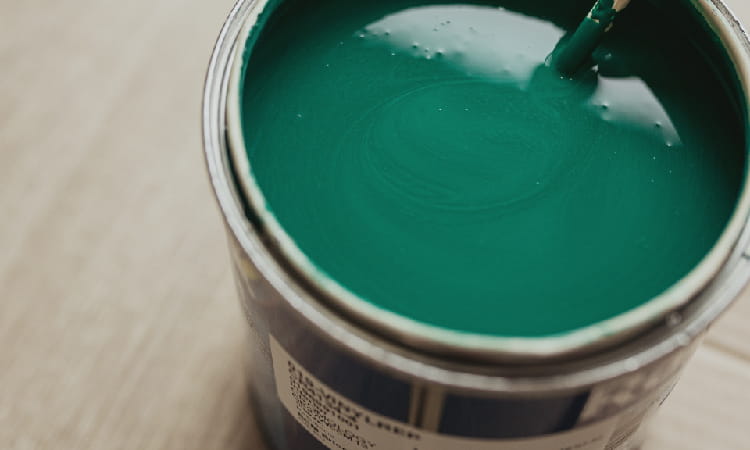An interior painting job could be costly. So, you tend to consider using excess interior paints for outside surfaces. The question is: Can you use interior paint outside?
The formulation of interior paints could not withstand external elements such as sunlight, rain, wind, snow, mildew, and other environmental factors.
It lacks the additives, pigments, and binding resins to be resilient to these harsh conditions. The paint quickly fades, cracks, and flakes, so it does not work well outside.
Is there a way to improve the result when using interior paint for outside surfaces? Read on to learn about this. You will also learn about the key features of interior paints.
I will also explore how this paint works on various outdoor areas, such as wooden and concrete surfaces.
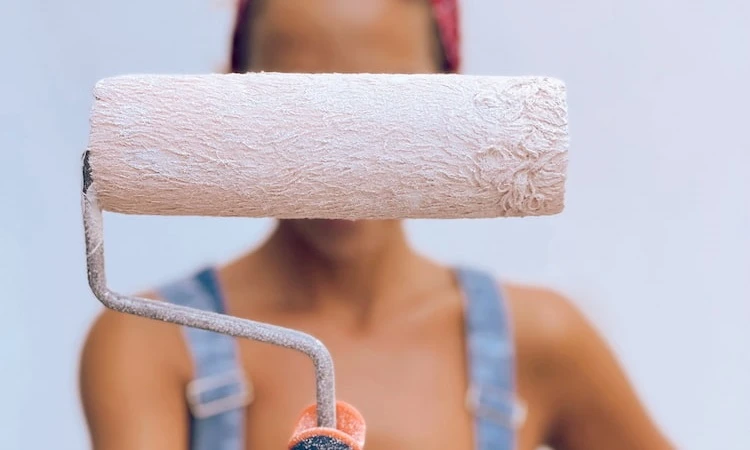
What is Interior Paint?
Before we understand what interior paint is, let’s briefly learn about the general components of paint. Paints contain pigments, additives, solvents, and resins.
These compositions are the reasons why the paint sticks to the surface. Removing one component will surely fail.
The component that keeps the paint liquid is the solvent. It evaporates when you apply the paint, leaving the other three lasting ingredients on the surface.
Resins (could be epoxy or acrylic) is responsible for holding the pigments (color) into the surface. Additives provide additional properties.
Additives make the paint easier to apply, is cleaning-friendly, and is mildew-resistant. They help the paint withstand environmental factors to avoid fading, cracking, or flaking.
Paints can either be oil-based (acrylic) or water-based (latex). Most interior paints are not oil-based due to the foul odor of the oil-based formula.
Acrylic paints are also difficult to clean, which is not ideal if you are working in an internal space such as your living room.
Let’s now understand interior paint by looking at its distinct characteristics and key features.
Key Features of Interior Paints
Interior paint is very distinct from exterior paint. Take a look at its key features and characteristics below:
- Interior paint is formulated for decoration and aesthetic purposes
- Interior paints are generally easy to clean; you can use water and ordinary soap to clean it
- It can resist scuffs, marks, and stains
- There are many choices of finishes, including matte, eggshell, satin, semi-gloss, gloss, and many other effects.
- The curing process of interior paint does not need sunlight
- The paint is health-friendly; it is made from chemicals that are safer for breathing; it contains fewer Volatile Organic Compounds (VOCs)
- It has no anti-fading properties as it does not deal with sunlight and other weather elements
- The formulation of interior paints is milder and less dangerous to human health; It includes lesser harmful additives and resins
- Interior paints are more resilient to physical damage
- It uses firmer resins as it does not deal with weather and temperature changes
Can You Use Interior Paint Outside?
If you paint outside surfaces, your paint must be resilient to environmental factors.
The formulation of interior paints is not strong enough to withstand external factors. With this fact, using interior paint outside is not ideal.
You can technically use it, but you will face many issues, and it will not last long. The common problems you will encounter are fading, cracking, and flaking.
The harsh sunlight will cause the paint to fade quickly.
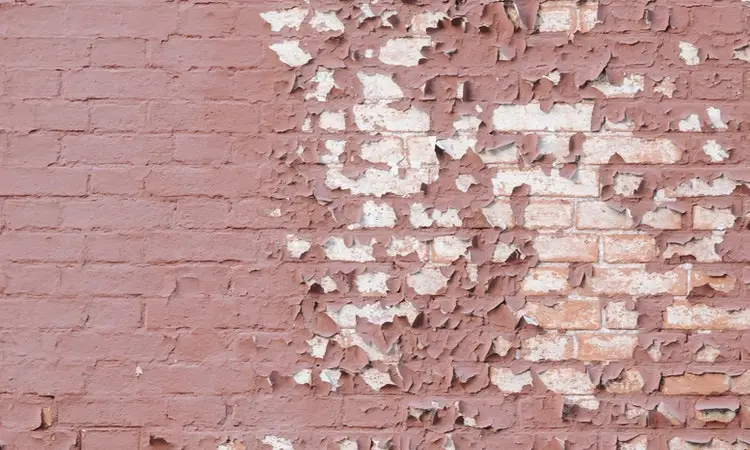
When it comes to durability, interior paints are less durable.
The paint features mostly organic materials that quickly fade when exposed to changing weather conditions. As a result, it can easily detach from the surface.
Moreover, interior paints have a lesser amount of additives and pigments. This characteristic is the reason it fades, flakes, and chalks quickly.
You will know that your paint is experiencing a chalking problem when a chalk-like powder sticks to your hand when you touch the painted surface.
However, to answer the question of whether you can use interior paint outside or not, the answer is yes but not recommended.
If you want the best results for your outdoor painting jobs, do not compromise. Use exterior paint.
Using Water-Based (Latex) Interior Paint Outside
As mentioned earlier, most interior paints are water-based or latex. Look at how latex interior paints work when you use them outside.
Using latex interior paint outside is not recommended because it lacks the capabilities to withstand frequent exposure to water, sunlight, snow, wind, or mildew.
Water-based paints are more susceptible to damage when exposed to harsh outdoor elements.
You will need to apply multiple coatings for latex paint to last longer when you use it outside.
Of course, the additional layer of paint means more expenses. Therefore, it might not be the best move when you have a painting project.
Additionally, water-based interior paints may not adhere very well to outside surfaces.
Frequent exposure to water or cold temperature may result in peeling. When it starts peeling, you know you are inches away from buying another gallon.
If you have to use interior paint to paint an outdoor surface like your fence, consider applying some coatings like a clear-coat sealer or varnish.
Using Oil-Based Interior Paint Outside
Acrylic or oil-based paints are generally more durable than water-based paints. These paints also adhere better to both indoor and outdoor surfaces.
But does it make acrylic interior paint an ideal option for outside painting jobs? The answer is still NO.
It is still not recommended to oil-based interior paint outside because of the reasons that I already mentioned. It contains lesser additives and pigments.
It may perform better than water-based interior paints, but the composition is still not strong enough to handle exposure to cruel weather conditions.
If you force using oil-based interior paints outdoors, you must be ready to apply additional coats to make it more durable.
Otherwise, you might get frustrated over the issues that can occur. It means that you will have more jobs to do and need more money to spend.
Using Interior Paint on Outdoor Wooden Surfaces
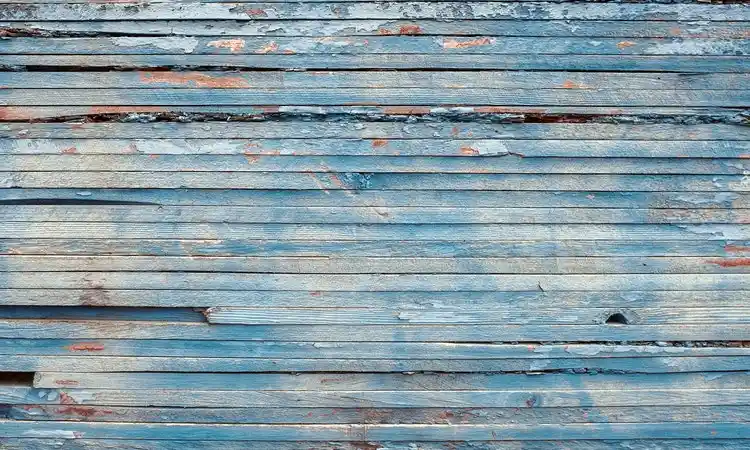
Interior paints adhere well to wooden surfaces, so there is no doubt that they will work. Water-based paints work great on wooden furniture.
Using interior paint on wooden surfaces like a chair is not a bad idea – IF the chair is to be used indoors.
However, you might find a way to make the paint stick longer on your outdoor furniture. First, you need to make sure you do the painting job right.
Before applying the interior paint on any outdoor wooden surface, ensure that you do the necessary preparations. Ensure that the surface is clean.
Sand the surface using a fine-grade sander to ensure the paint will adhere well. Then, enjoy and start painting your object.
So, is that it? Is everything good after applying the paint? I don’t think so. Never forget that you are using interior paint that doesn’t last very long when exposed to outdoor elements. So, what can you do?
You can apply exterior-grade clear-coat sealers or varnish to extend the paint’s life. You can apply more than one coat for better protection of the paint.
Although, if you have not purchased interior paint yet, I suggest you use exterior paint.
Using Interior Paint on Outdoor Concrete Surfaces
Interior paints (especially water-based ones) work well on outdoor concrete surfaces such as walls or benches.
That is, if we only talk about applying the paint. But if we talk about durability, it is still not recommended for obvious reasons.
The paint is not weather-proof; it easily deteriorates in outdoors.
In other words, it is not a question of whether the paint sticks to the surface or not. It is a question of what happens to the paint when exposed to the outside elements.
Interior paints cannot withstand harsh environmental factors, so exterior paint is still the best option.
However, if you have excess interior paint that you want to use on outdoor concrete surfaces, go right ahead.
However, apply additional coatings to make the paint last longer. Before applying the paint, also make sure that you prepare the surface.
Choosing interior paint for outdoor concrete nails is not the best decision. I guess you figured out why. Well, if I will reiterate, it asks more from you: more work and money to spend.
Using Interior Paint on Outdoor Metal Surfaces
Have you ever thought of using interior paint on metal surfaces? If you have, you might need to think again. Interior paints do not adhere very well to metal surfaces.
They may stick to the surface, but it doesn’t last very long.
The number one enemy of paint is oxidation and rust. When the metal becomes rusty, the paint can easily peel. Metal surfaces also heat up when exposed to sunlight. Interior paints could not resist too much heat.
Painting metal surfaces require specially formulated paint. Don’t waste your money on buying the wrong paint.
Get the paint that says “for metal” so that you will enjoy the result. Remember, the right decisions will save you money.
Related Read: Interior Paint vs. Exterior Paint: Full Comparison
Reasons Why Using Interior Paint Outside Is a Bad Idea
Here we will talk about why using interior paint outside is not the best idea. I may not cover everything, but the obvious reasons are presented.
1. It Could Not Withstand Environmental Elements
The formulation of interior paints is not good enough to resist environmental factors such as rain, snow, wind, mildew, and sunlight. Rain pollutants can cause the paint to deteriorate more quickly.
Snow or cold temperature can easily cause interior paints to peel because of the weaker formulation.
The paint’s direct exposure to sunlight can also easily cause it to crack or flake.
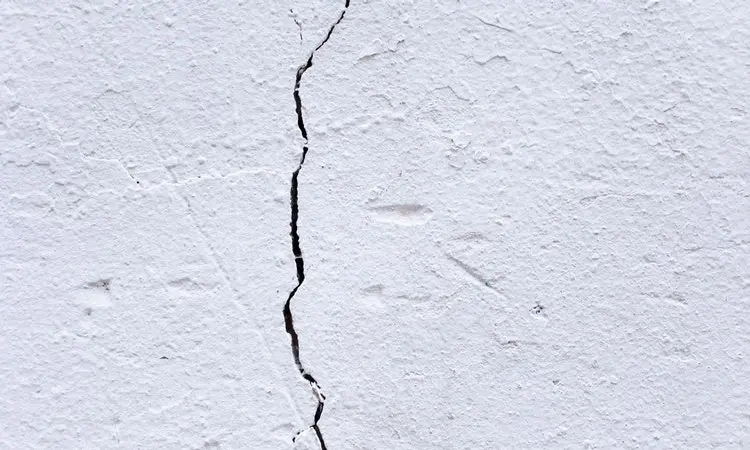
2. It Is Not Durable
Interior paint will frustrate you if you apply it on outdoor surfaces. The paint is not as durable as exterior paint.
It doesn’t have the same level of additives, resins, binders, and other components as exterior paints. You will see it fading, cracking, chalking, and peeling in a short period.
Exterior paints last between 5 to 7 years when used on outdoor surfaces. Don’t expect interior paints to perform the same.
You’d be lucky if the paint lasted a year or two. Sometimes it even only lasts for a few months.
3. It Requires More Coating; More Expenses
Interior paints have issues adhering to outside or outdoor surfaces. They are also very vulnerable to weather elements.
For these reasons, you must apply several protective coatings to improve durability.
Interior paints are cheaper compared to exterior paints. This fact could be the reason why some people prefer the former.
However, it may not be the best choice after all. You may spend more money to buy protective coatings so the paint will last longer.
Can you skip the protective coatings to save some dimes? Of course, YES. But be ready to start saving for the repainting job, as interior paints don’t last very long when used outside.
What To Do If You Accidentally Used Interior Paint Outside To Make It Last As Long As Possible?
You purchased gallons of paint and went ahead with your outside painting job. Then you realize that you used interior paint. Is it the end of the world for you?
Well, you can decide to remove the paint and repaint the surface using exterior paint.
However, leaving the paint alone is probably the first thing that comes to your mind. But your next problem is how to make the paint last longer.
Related Read: How to Easily Remove Chalk Paint From Any Surface
You already learned that interior paints do not last long when exposed to harsh weather conditions.
Quick deterioration, fading, flaking, and chalking are the common issues you will encounter. When this happens, your paint will look ugly.
To extend the life of interior paints when used outside, you can consider covering it with an exterior-grade clear-coat sealer or painting it over with exterior paint. Let’s talk more about them below.
Applying Exterior-Grade Clear-Coat Sealer
This method would extend the life of the interior paint when used outside. This is a way of making the paint stick longer to the surface.
However, clear-coat sealer paints may not address the fading issue, and the sealer may turn yellow after some period.
How many coats do you need to apply? Applying a single coat helps in prolonging the paint’s life. But you can do two or three additional coats to maximize longevity.
Not economical, but it is a good decision if you wish to keep the paint and make it last longer.
Covering it with Exterior Paint
Another option is to use exterior paint directly over the interior paint. This option may work in making the paint last longer.
Some exterior paints react well with interior paints. As long as the reaction process is assured, this option may help.
However, if you think about it, you are repainting the whole surface. Therefore, you need to be extra careful with your decision.
The interior paint may still deteriorate inside; it may not have the same life as the exterior paint painted directly on the surface.
So, ask yourself again and again whether you proceed with the cover-painting job or remove the interior paint and redo the job using exterior paint.
Alternatively, you can ask for advice from paint experts to avoid further wasting resources.
Can You Paint Over An Interior Paint Used Outside With Exterior Paint?
Painting over an interior paint used outside with exterior paint is possible. If you think removing the interior paint from the surface is taxing, you can consider applying exterior paint directly onto it.
However, it may shorten the life of the exterior paint.
The presence of interior paint on the surface will affect the actual performance of the exterior paint. The interior paint can still deteriorate under the exterior paint, resulting in peeling.
Below are some tips on how to paint over interior paint with exterior paint:
- Ensure that the interior paint adheres to the surface. If you see that the paint is peeling, don’t force it; it will fail.
- Scuff or sand the surface painted with interior paint before painting it with exterior paint.
- Make sure that the exterior paint you use reacts well with the interior paint. It is probably hard to know it.
- Painting over interior paint with exterior paint sounds like a good option. But for a better result, I will highly suggest having the interior paint removed first. Doing this will ensure high-quality results. What is the point anyway if you paint it over with exterior paint?
Can You Make Interior Paint Into Exterior?
Let’s say you have gallons of interior paints available for use. Then, you got an outdoor painting job to do.
You can’t help but think of making these gallons of paint exterior paint. It saves you money that you can use for your other projects.
What if I tell you that it is possible? Of course, we will not discuss things that wanna-be-scientists discuss, such as mixing a few drops of additives, a certain amount of polyacrylic, etc. It is too complicated for us to understand.
It may work, but it requires a lot of experimenting before perfecting the formula. There is an easier way to convert your interior paint into an exterior paint. That way is by mixing both paints.
Mixing Interior with Exterior Paint
Yes, you can mix interior paints with exterior paints to alter the composition of the former and make it stronger to resist weather elements.
When mixing these paints, you must ensure that your mixture contains more exterior paint to strengthen the formulation.
Of course, you need to go back to the different bases of paints. There are oil-based and water-based paints. It is basic science that you cannot mix water with oil.
Therefore, if you would like to mix interior with exterior paint, ensure that they have the same base.
When you have thoroughly mixed the paints, you can proceed with your outdoor painting job. Now, you can expect that your interior paint has the capability of resisting changing weather elements.
However, it does not really perform the same as pure exterior paint.
Related Read: Can You Use Exterior Paint Inside and Why
Using Interior Paint Outside: FAQs
1. Can you use interior paint on your front door?
If your door is protected with a storm or glass door, it should be fine.
Using interior paint on your front door with protection is not very bad as long as it is not directly exposed to outside weather elements. Interior paint adheres very well on wood surfaces.
2. Can you use interior paint on a porch ceiling?
Porch ceilings are still exposed to harsh weather conditions, and using interior paints on them is not recommended.
The paint will not last long and may experience fading, flaking, chipping, chalking, and peeling issues.
Stick to using exterior paint for exposed or outdoor areas like your porch.
3. Can you use interior paint on a fence?
You can technically use interior paint on a fence, but it is not ideal. The paint could not withstand harsh weather conditions.
Exposure of the paint to direct sunlight may cause it to crack. The cold weather or frequent exposure to rain can cause the paint to fade or chalk.
4. Why should I not use interior paint outside?
Interior paints could not withstand harsh weather conditions such as wind, mildew, snow, sunlight, and changing temperatures.
It quickly fades, cracks, flakes, or chalks when exposed to these elements of its weaker formulation.
Conclusion
To summarize, interior paint outside is not recommended due to durability issues. This paint does not resist weather elements such as wind, snow, mildew, and sunlight.
It easily fades, cracks, or peels when exposed to these harsh conditions.
If you want to use interior paint for some of your exterior projects, apply protective coatings to make them last longer.
Alternatively, you can mix interior with exterior paints to improve its formulation. Doing this would make your interior paint stronger.
However, if you want less hassle, buy the correct type of paint for your project. Paint companies have already figured out the best paint for different conditions.
It is maybe best to stick to what is already known to work well.

